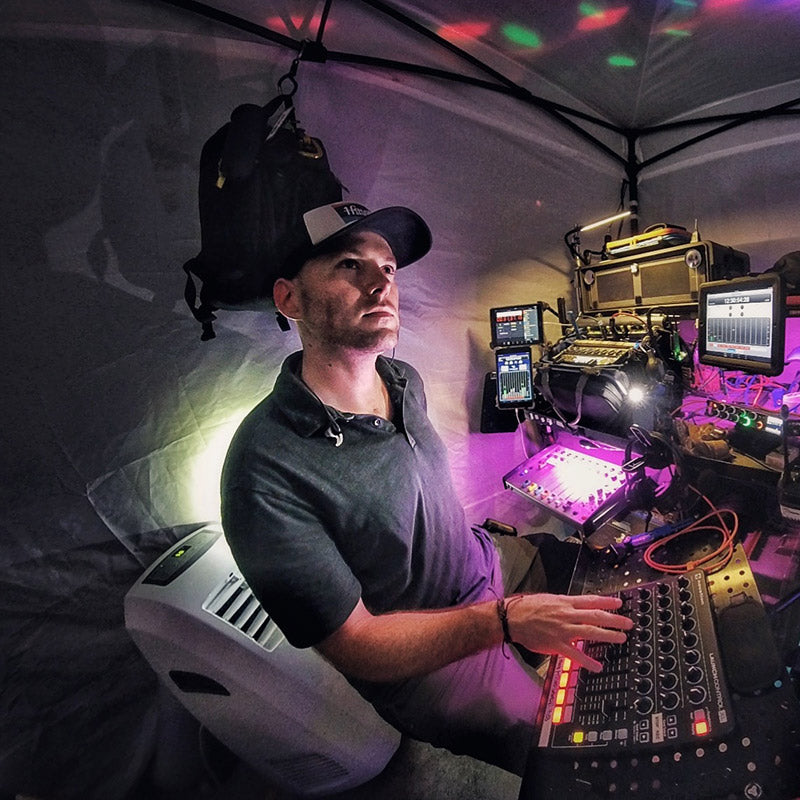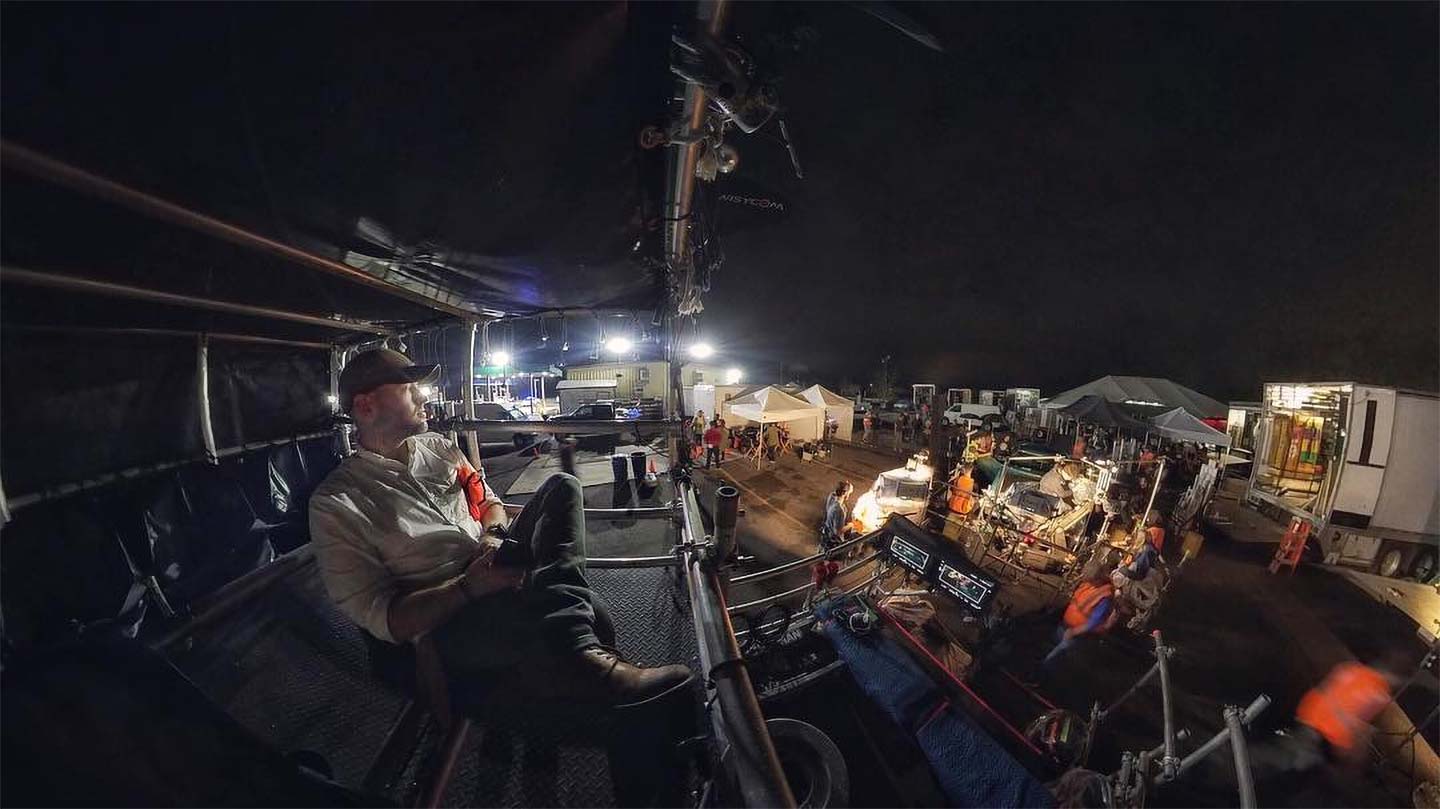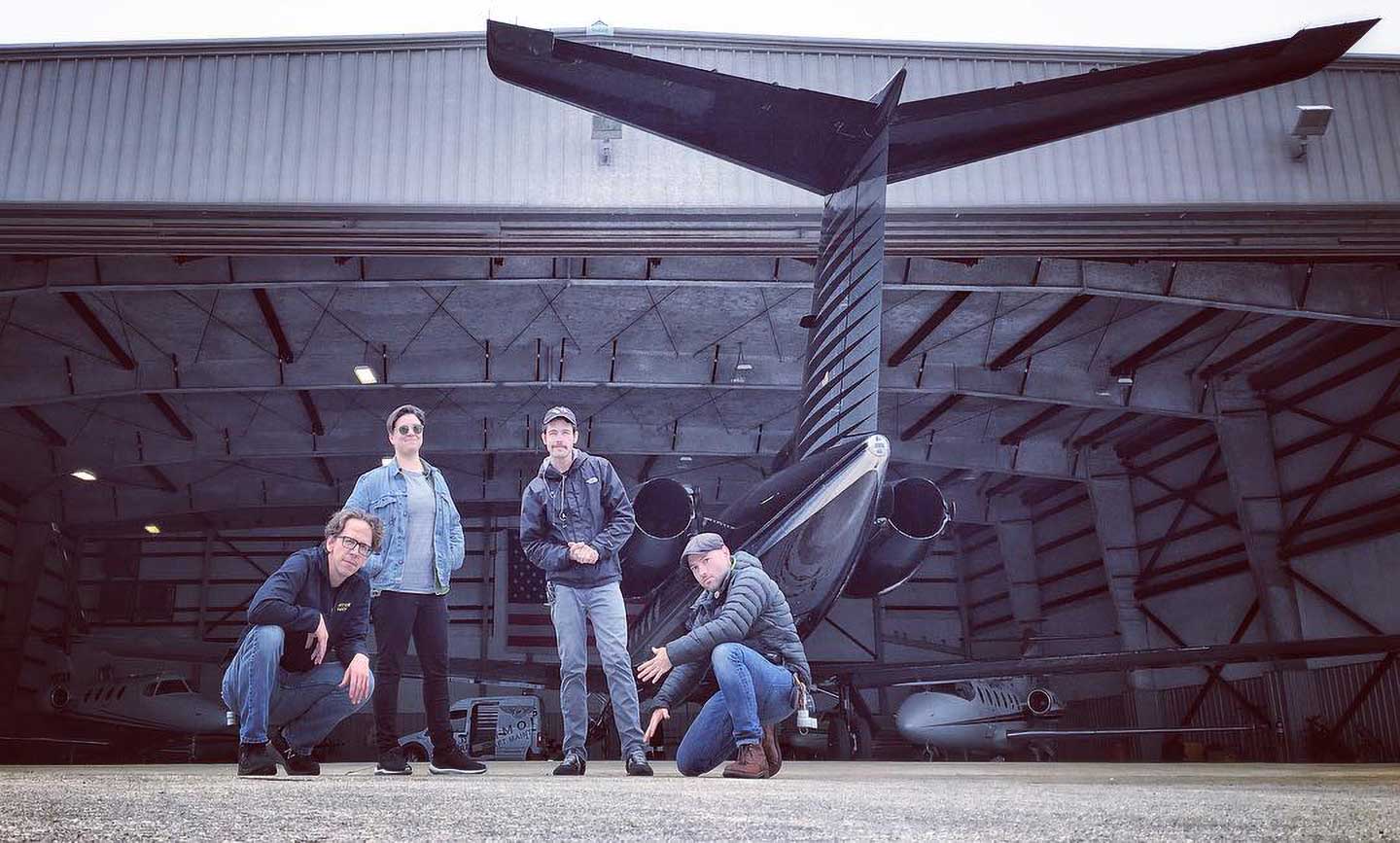Chris Welcker: Production Sound, Mentors, Teams and Espresso Machines

We first met Production Sound Mixer Chris Welcker (Catgut Sound) at a sandwich shop in New Orleans having lunch with Justin and Lukas from SoundHard. A New Orleans local all his life, Chris started out in music and media and quickly found his niche in production sound.
Since 2007 he has worked his way up through an impressive list of films including 12 Years a Slave, Jurassic World, Keanu, Jack Reacher: Never Go Back, Queen & Slim, and Bill & Ted Face the Music (still in post-production at the time of writing), to name a few. He has built a solid team around him and his sound company Catgut Sound and is also a specialist in VR sound. Check out his IMDB profile here.
What sparked your interest in sound and how did you get into production sound specifically?
I was always interested in music when I was growing up. I started out playing saxophone and at the point when I was looking into colleges, I started studying Jazz performance. That transitioned into me pursuing a degree in Music Media and I also spent a good amount of time in the visual arts department where I took several animation classes, Photoshop and editing courses. I thought that I would pursue a career in film scoring and upon graduating I landed a job writing music for local tv ads and long form videos. Through working with this smaller company, I had to learn to do more than just compose music, so they trained me on production sound, camera work and editing.
At that time, Hurricane Katrina had just wiped out my hometown of New Orleans. Just previous to this, there were a lot of films being shot in the area and the hurricane displaced a lot of the local crew that had been filling the various roles needed on a production. I saw the opportunity to go back and work my way into this growing industry and to be close to my family during this time.
What kind of projects do you mostly work on now? Is there a big difference in preparation, both mentally and kit-wise, from project to project?
"There is a considerable difference with these sorts of projects as you need to speak the language of a musician as well as a film maker.”
I typically work on feature films and most recently it seems that my experience in music has earned me the opportunity to work on more more music-oriented films. There is a considerable difference with these sorts of projects as you need to speak the language of a musician as well as a film maker. And, there are particular pieces of gear that lend themselves to musical performances for film such as large PA speakers, subwoofers, in-ear monitors, music software, etc. Making sure you have the gear needed to deliver the desired end result is really important and balancing those times when you need to rent items vs purchasing them so that you can be flexible with the constantly changing schedules is a lot to stay on top of.
Also, when it comes to music for movies, there is a lot that goes into each piece of music before it can be used on film such as copyright clearances, getting approval for the various versions of a song, and determining if the song will be played back or a live record on the day. If it is determined to be playback, then getting the Protools session in order also takes some time and these files often times will make their way to us the night before or sometimes even the day that the piece will be used.

Chris on set in New Orleans
Speaking of kit… can you give us any insight into what you use regularly, any indispensable tools that changed the way you work and consumables you wouldn’t be caught dead without?
Over the past couple of years, we have switched to using almost primarily DPA lavalier mics. The Bubblebee [Lav] Concealers have been a great tool for mounting these mics and minimizing the clothing rustle. These mics are often times great as plant mics and having the Windbubbles as wind protection is a very easy and effective solution. Also, with the amount of music performances we have been dealing with on the past several productions, the Bubblebee Sidekick has been a great new addition to the sound package. Earwigs are a great tool for when you need to play music to an actor during a scene and you don’t want to contaminate the dialogue or some element of sound that you are also trying to capture, however earwigs have some distinct drawbacks.
More recently it was announced that they are no longer producing the Phonak Invisity line of earwigs and are switching to the Roger series. I discovered the Bubblebee Sidekick before working on a production where we were expected to have a large cast of characters that would need some type of in-ear monitor for music cues. The needs of the shoot dictated this was the type of tool that would make sense to use, but the cost associated with this volume of earwigs was not in the budget. After looking at costumes and hair for these characters, I started thinking the Sidekick might be a great alternative.
Earwigs are a great tool, but what we learned through our use of the Sidekick is that they offer several advantages. The volume levels that actors often request can sometimes not be met with traditional earwigs, but thanks to the various ear tips that are available with the Sidekick, we were able to cater to the actor’s needs in a very flexible way. We were able to provide one-ear or two-ear setups for each actor and because of their design, we could route the cables through the back of their clothing and hide the cables under their hair or costumes and you would never know it was even there. It is definitely a new tool that has a permanent place in the kit!
"...thanks to the various ear tips that are available with The Sidekick [IFB], we were able to cater to the actor’s needs in a very flexible way.”
My Boom Operator Ryan Farris has even found that the comfort level of the Sidekick has offered him a way to listen to the set between takes so that he can give his ears a rest from being covered and closed off from the outside world around him. He is constantly promoting that they are the perfect option for a utility sound person who is primarily tasked with keeping a listen to the set, but also with interfacing with actors and the crew.
They are comfortable to wear for a full day, sound great and allow you to have a conversation without the need for taking out your earpieces. And, the durability of having the kevlar reinforced cable provides peace of mind that your investment in this product will last through the rigors of set life.

Chris and the Catgut Sound Team
There must be a huge amount of pressure to deliver and get things right during larger film productions. How does it feel when you’re on-location in that kind of environment?
There is definitely a huge amount of pressure when working on a film set.
That said, people often comment on how calm I seem. It’s good that I come across that way, because it’s not how I feel internally at times. I can be pretty intense and a bit of a perfectionist. I’m always thinking of how to improve. I’ve fortunately been able to build a team with similar drive and dedication, and they know how to keep me sane in difficult moments. We’re able to rely completely on each other, which brings a great deal of comfort when facing challenges.
I also have a very supportive and understanding wife. She knows the kinds of hours I work and the challenges I’m dealing with and supports me with words of encouragement along the way. She will also routinely send me to work with amazing baked goods to share!
"there’s something comforting about sharing food and drinks. I carry an espresso machine on the sound trailer...”
Maybe it has something to do with growing up in New Orleans, but there’s something comforting about sharing food and drinks. I carry an espresso machine on the sound trailer, and after lunch we will typically find a moment where we can share an espresso, chocolate, or baked treat. Sometimes we even make enough for other departments. Once the work is done for the day, we might end with a cold beer.
All of this gives us the opportunity to celebrate the things that went well that day and discuss any upcoming events that might need special attention. It’s a little reminder that while we work hard, it’s important to take the opportunity to build on our personal relationships.
Catgut Sound
Can you tell us a little bit about your own company, Catgut Sound?
Catgut Sound is a company I started several years ago, when I began mixing. I was thinking about what I wanted to call it, and I remembered learning about catgut strings on a violin. The fact that there is a particular tone that comes from this type of string seemed pretty cool to me! I learned a little about branding and decided that I wanted to create a logo.
I recently began using a variety of cameras and techniques to have fun promoting my own brand on social media, and I have a website that shows off my various sound interests. I love that having a sound company also gives me the chance to earn a living, while still providing opportunities to be surrounded by my passion for music. Working on music-focused movies is the ultimate combination of my interests.
You’re based in New Orleans, but have you done any work elsewhere in the USA or farther afield?
I was born and raised in New Orleans, and I’m fortunate that I’ve been able to continue to live and work in such an interesting city.
The industry has also given me some opportunities to travel for work and meet a ton of great people along the way. I have worked in the Dallas/Ft. Worth areas, Mississippi, Alabama, Boston, Florida, New Mexico, Michigan, Kentucky, Indianapolis, Pittsburgh, Richmond VA, and Ohio. Each of these occasions has exposed me to several communities of film makers, and I’ve made many great friends and acquaintances along the way.
I would love for my work to one day take me overseas. (Or perhaps I’ll just reserve that for my downtime…)

On location in the desert
You’ve done commercial work for the likes of Pepsi and Jim Beam. Are there any unique requirements or expectations for those kinds of jobs?
One big difference is that I’m usually expected to transport my own gear to and from each gig. I’ve become pretty good at condensing my audio gear into a very portable rig that I can load into my personal vehicle, while not giving up too much in terms of my capabilities.
It is nice having a sound trailer provided for you when on a feature film. You have every piece of gear available should the needs of the shoot change, and you have a place to go when you need to make a repair or get a break from the heat, cold, rain, or bugs. On a commercial, however, I feel like a different sort of preparation is required; it’s just about the same amount of work to get the job up and going, but before you know it, it’s done.
What are some of your most interesting projects so far?
I’ve had the opportunity to work on some really memorable projects.
"On Twelve Years a Slave and Jurassic World, I met Kirk Francis, who became my mentor and a huge influence on my life and career.”
On Twelve Years a Slave and Jurassic World, I met Kirk Francis, who became my mentor and a huge influence on my life and career. He continues to be a person who questions and (sometimes) validates my thoughts and decision making. He also introduced me to the guitar, which has become a major obsession of mine over the past few years. We spent hours playing music in the sound trailer during the several downpours that happened during summertime in New Orleans. He has since retired to the Big Island of Hawaii and has had my wife and I over for visits several times.
My first big mixing job was on a movie called Keanu, which was a comedy starring Keegan-Michael Key and Jordan Peele. It was such a great experience; it really established how laughing in the workplace is one of the best things. We were all working hard to perform our jobs at a high level, yet when they called ‘Cut!’, we all celebrated in laughter. It was the best feeling!
Any interesting ideas or plans for the future?
I’m really intrigued by the VR Medium. Having spent a lot of time shooting 360-degree videos, recording/mixing audio for them has really opened me up to the possibility of making content that can create a near-real experience for the viewer. I plan to continue exploring this.
Ultimately, I want to keep the momentum going! I just want to keep spending my time doing what I love and sharing experiences with good people.


